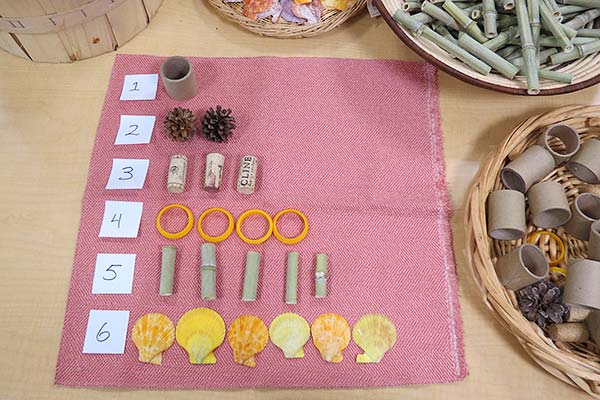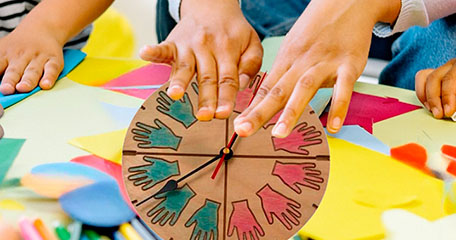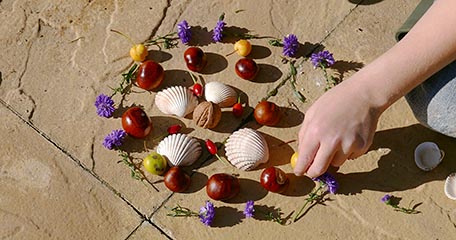Maths play with loose parts
| September 2020Outside our window stands a large Tulip Poplar tree. In spring, petals rain from its yellow and orange blossoms. In summer, it shades the garden with green leaves. And in autumn, crunchy brown leaves and tiny cones blanket the ground. This one tree provides an abundant supply of natural loose parts for young children to gather and explore. Simon Nicholson first coined the term “Loose Parts” to describe objects in an environment that are open-ended, inspiring creativity and discovery.
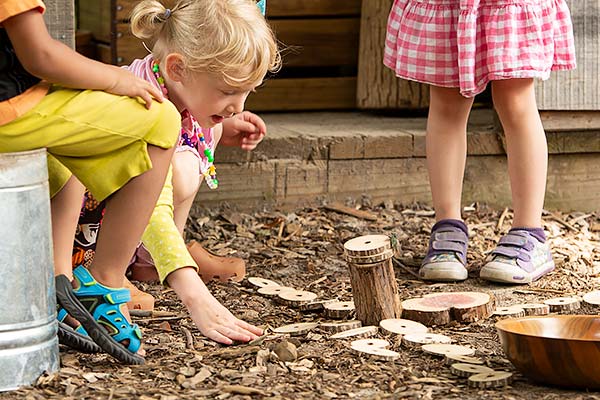
Natural materials like leaves, sticks, flowers, rocks, pine cones, feathers, and shells can be found in gardens, playgrounds, and parks surrounding our homes and schools. These natural loose parts are accessible in almost every neighbourhood, and can be gathered for free, making them a perfect material for teaching.
One area of early learning particularly suited for the use of these materials is maths. Natural loose parts can be used in a multitude of mathematical ways. An assortment of pine cones can be used for classifying, sorting, and counting. Leaves can be used to investigate shape and symmetry. Rocks can be measured and compared by weight or size. All the foundational areas of early maths can be explored in a playful way using natural loose parts.
In my many years of teaching I have found that provoking a young child’s interest in maths comes easily when natural loose parts are offered. Children seem drawn to materials that are real and treat them with great interest and care. Also, a parent or teacher can strengthen the connection children have with the materials when they work together to collect natural loose parts where they are typically found. Not only does this encourage the child to be an active explorer in their outdoor environment, it also strengthens children’s connections with the natural world.
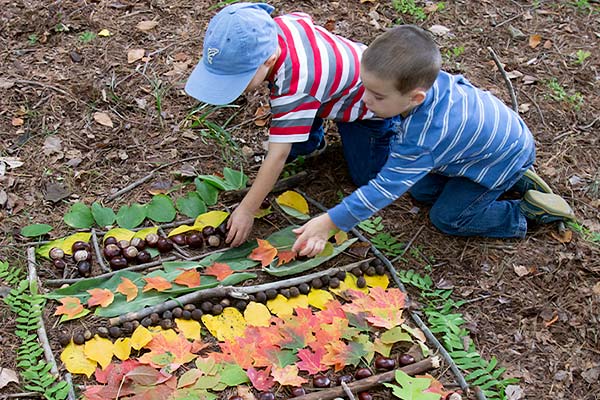
Leaves can be used to investigate shape, pattern, and symmetry
Once you've collected these natural loose parts there is a myriad of questions that can be asked to guide children’s thinking. For example, What did we find the most of? Tell me about your stick. Can you find something longer? Which rock is heavier? You can also use loose parts to model mathematical skills like how to count acorns using one-to-one correspondence, how to create a pattern with fall leaves, or how to measure by comparing two feathers. Most importantly, through these playful interactions, rich maths language flows and becomes part of the child’s vocabulary. Overall, memories made with natural loose parts can have a lifelong impact on a child and their motivation to learn more about maths.
Here are a few of my favourite ideas for outdoor maths play using natural loose parts:
- Create shapes using twigs, sticks or pods. Try to make triangles that are different sizes and shapes. Challenge yourself to make a hexagon or an octagon.
- Go on a nature hunt using an egg carton to collect your findings. Ask the child to place one item in each cup, thus reinforcing their one to one correspondence.
- Search for four-leaf clovers in the grass. Children may show their early ability to subitise as they quickly scan a patch of three-leaf clovers, searching for the lucky one with four leaves.
- Sort seashells or other natural materials by variety, size, colour, or shape. Then mix them back together and sort in another way.
- Cut leaves in half and ask children to put the pieces back together. Ask the child to consider which half matches the other and how they know they are right.
- Puddle paint. Practice writing numbers using paintbrushes and water on concrete.
- Create patterns with a collection of rocks. Begin by asking the child to copy or extend your pattern, and when they are ready, create a pattern of their own.
- Nature Faces. Draw an oval on the ground using chalk. Then use a variety of loose parts to create a face. Count the items you used to make the eyes, ears, nose, mouth and hair. Make up a story about the face. Is it a reflection of yourself or someone else?
- Find a stick, then ask the child to find one that is longer or shorter. Each time they find a new stick, hold it up to the other one and compare. Finally, lay all the sticks on the ground and order them by size.
- Search for tiny wild flowers or weeds, like dandelions and clovers, then bundle them into groups of 5 or 10. Finally, count by 5s or 10s to see how many you have altogether.
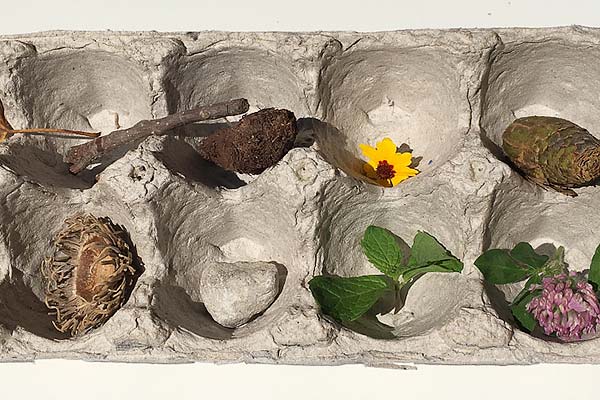
Use an egg carton tray for collecting and sorting nature objects
Maths play with loose parts
Sorting
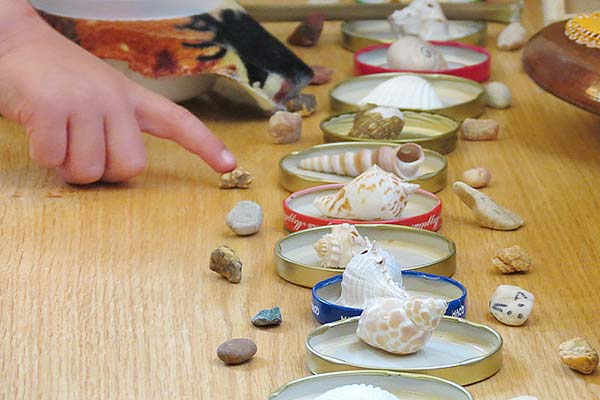
Forming shapes
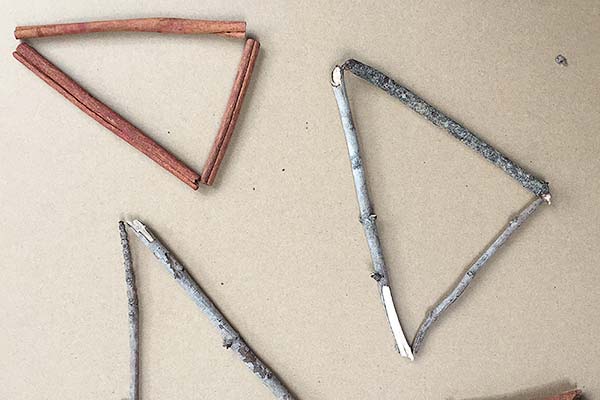
Making patterns
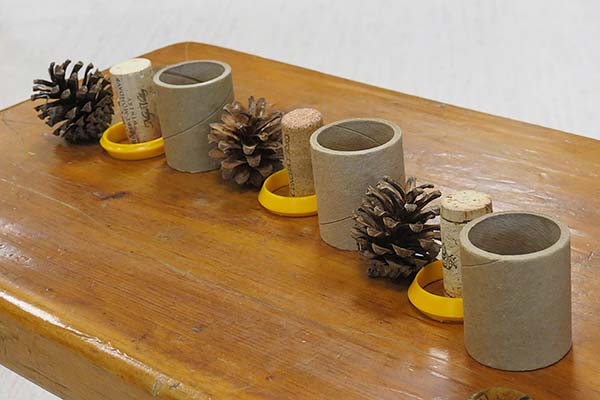
Counting
